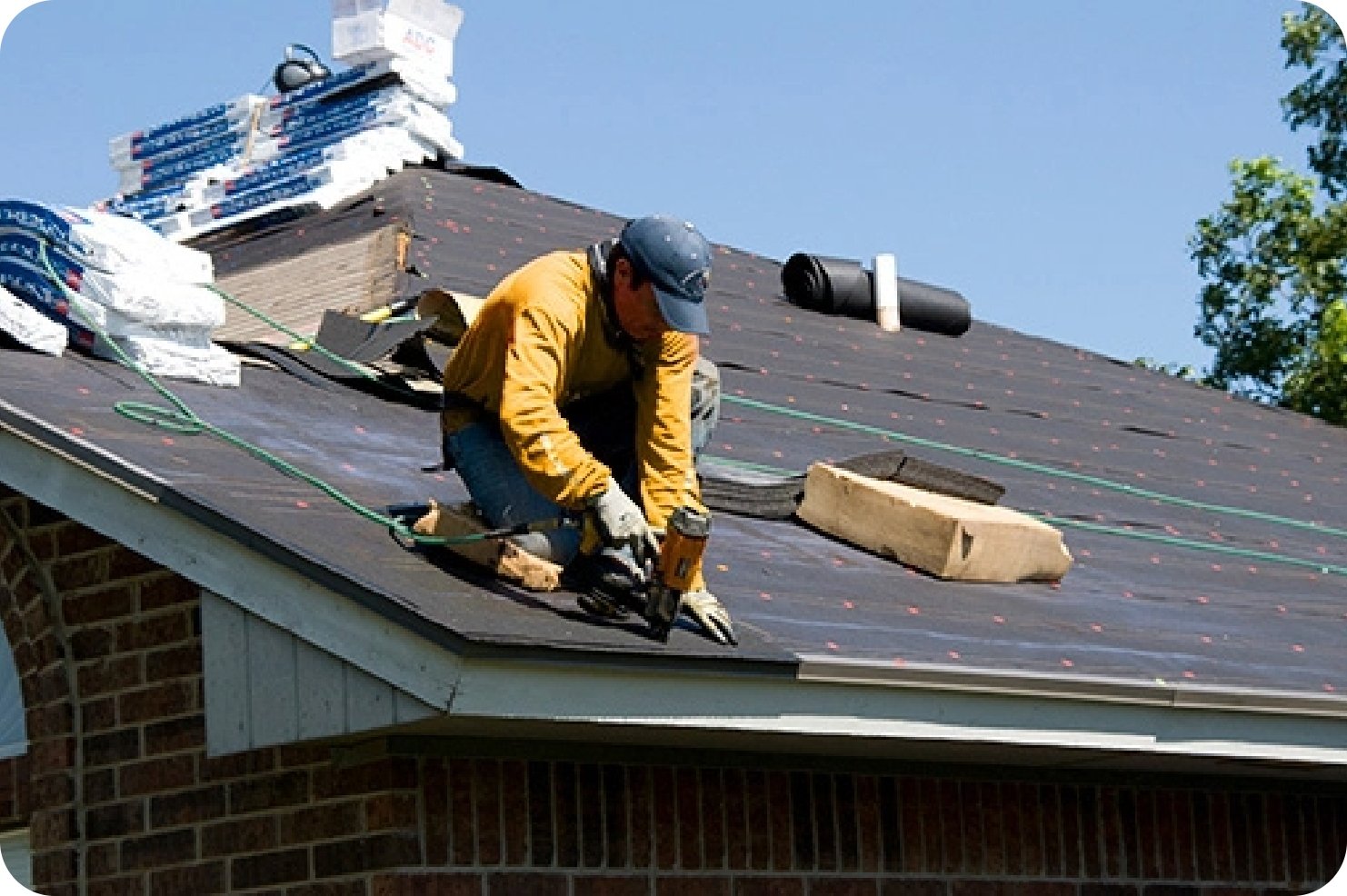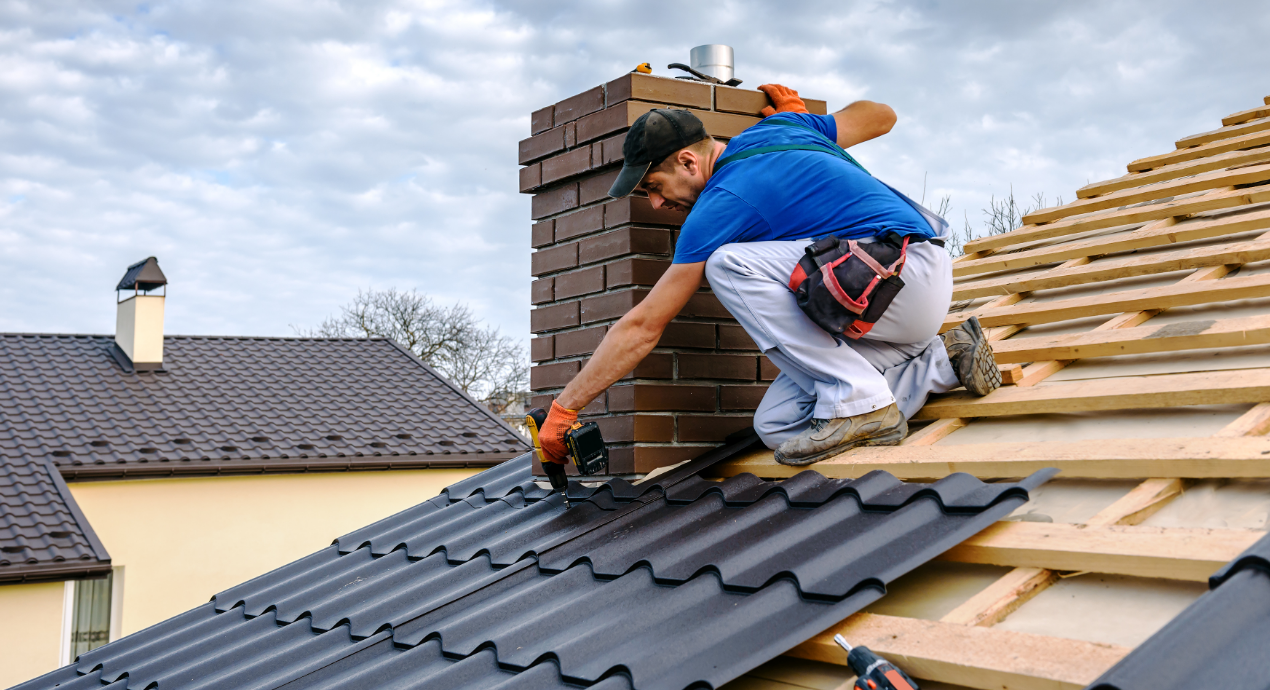Roofing Companies Oahu: Top-Rated Roofers for All Roofing Projects
Roofing Companies Oahu: Top-Rated Roofers for All Roofing Projects
Blog Article
Comprehending the Different Kinds of Roof Coverings: A Comprehensive Guide for Homeowners
With an array of choices-- varying from the typical gable to the modern level-- each kind presents special benefits and difficulties that must straighten with the property owner's details demands and environmental considerations. As we discover the intricacies of different roof covering types, it comes to be obvious that one dimension does not fit all; the ideal option might stun you.
Gable Roof Coverings
Saddleback roofs, defined by their triangular shape, are amongst one of the most popular roof styles due to their simplicity and performance in dropping water and snow. This design features two sloping sides that fulfill at a ridge, permitting effective drainage and lessening the threat of water buildup. The steep pitch frequently related to gable roofs boosts their capacity to deal with heavy rainfall, making them suitable for various environments.
In enhancement to their practical benefits, gable roofing systems use aesthetic convenience. They can be adapted to numerous building styles, from standard to modern homes. The layout can also suit added functions such as dormer windows, which enhance all-natural light and ventilation in the attic area.
Additionally, saddleback roofs offer sufficient space for insulation, adding to energy performance. Property owners can pick from a variety of roof covering materials, consisting of asphalt roof shingles, steel, and ceramic tiles, even more boosting personalization alternatives.
Regardless of their benefits, saddleback roofs might require additional support in locations vulnerable to high winds or hefty snowfall. Generally, the gable roofing system continues to be a preferred option as a result of its mix of capability, sturdiness, and aesthetic charm.
Flat Roofs
Flat roofings are frequently acknowledged for their minimal design and sensible applications, specifically in industrial and commercial setups (oahu roofing). These roofing systems include a straight or almost straight surface, which permits very easy building and construction and flexible room usage. While they may do not have the visual allure of pitched roof coverings, flat roof coverings supply countless advantages, particularly in city settings where making the most of area is critical
Among the main benefits of flat roofing systems is their accessibility. House owners can use the roof covering space for numerous functions, such as rooftop gardens, balconies, or solar panel setups. In addition, flat roofs are commonly a lot more cost-effective to preserve and set up contrasted to their sloped equivalents, as they require fewer materials and labor.
However, level roofs do present specific obstacles. Appropriate water drainage is crucial to protect against water merging, which can bring about leakages and structural damages. Therefore, picking high-quality waterproofing materials and regular assessments are critical for making sure durability. Usual materials used for flat roofs consist of built-up roof covering (BUR), modified asphalt, and single-ply membrane layers, each offering distinct benefits. On the whole, level roof coverings function as a adaptable and useful selection for many home owners and organizations alike.
Hip Roof Coverings
Hip roof coverings are defined by their sloped sides that merge on top, developing a ridge. This style stands out from saddleback roofs, as all 4 sides of a hip roofing incline downwards toward the walls, giving a much more stable structure. The angle of the inclines can vary, enabling convenience in building aesthetic appeals and capability.
One of the main benefits of hip roof coverings is their capability to endure heavy winds and damaging climate condition. The sloped surfaces make it possible for much better water drainage, decreasing the threat of leaks and water damages. In addition, hip roofing systems provide raised attic room space, which can be made use of for storage space or perhaps transformed right into habitable areas.
Nonetheless, building a hip roof covering can be more intricate and expensive than simpler roof types, such as saddleback roofs. The additional material and labor associated with producing the slopes and guaranteeing correct structural integrity More hints can bring about higher expenses. In spite of these downsides, several house owners favor hip roofing systems for their longevity, visual appeal, and possibility for power effectiveness.
Mansard Roofings
Mansard roofs, commonly recognized by their distinct four-sided style, attribute 2 inclines on each side, with the lower slope being steeper than the upper. This building design, originating from France in the 17th century, is not just visually attractive yet useful, as it takes full advantage of the usable area in the upper floorings of a building. The steep reduced slope enables more clearance, making it an ideal selection for attic rooms or lofts, which can be exchanged living spaces.
Mansard roof coverings are characterized by their adaptability, fitting numerous building styles, from traditional to modern-day. They can be built with various products, including asphalt shingles, slate, or steel, supplying home owners with a variety of alternatives to match their budgets and choices. In addition, the design allows for the assimilation of dormer home windows, boosting all-natural light and ventilation in about his the top degrees.
Nonetheless, it is important to consider the potential drawbacks. Mansard roofings might require even more upkeep as a result of the intricacy of their design, and their steep inclines can be challenging for snow and rain drainage. In general, mansard roof coverings combine style with practicality, making them a prominent option among property owners looking for distinctive architectural functions.
Dropped Roofing Systems
As house owners increasingly look for simplicity and performance in their building designs, lost roofings have arised as a popular option. Defined by a single sloping aircraft, a shed roofing system provides a minimal aesthetic that enhances different home designs, from contemporary to rustic.
One of the primary advantages of a shed roof covering is its simple building, which usually translates to lower labor and product prices. This design permits for reliable water drain, lowering the risk of leakages and water damages. In addition, the vertical incline provides adequate area for skylights, improving all-natural light within the inside.
Lost roofing systems also offer convenience in regards to usage. They can be properly integrated right into additions, garages, or outdoor frameworks like sheds and pavilions. Additionally, this roofing style can fit different roof covering materials, including metal, asphalt tiles, or perhaps environment-friendly roofings, aligning with environment-friendly efforts.
Nevertheless, it is important to take into official website consideration regional environment conditions, as heavy snow tons may require modifications to the roofing system's angle or framework. Generally, dropped roofing systems offer a functional and cosmetically pleasing choice for home owners seeking to optimize performance without compromising design.
Verdict


Gable roofing systems, defined by their triangular form, are among the most prominent roof designs due to their simplicity and efficiency in losing water and snow. oahu roofing. The high pitch typically linked with gable roofs boosts their capability to manage hefty precipitation, making them ideal for numerous environments
While they might lack the aesthetic allure of pitched roofings, level roofings supply many benefits, particularly in city environments where optimizing area is essential.

Report this page